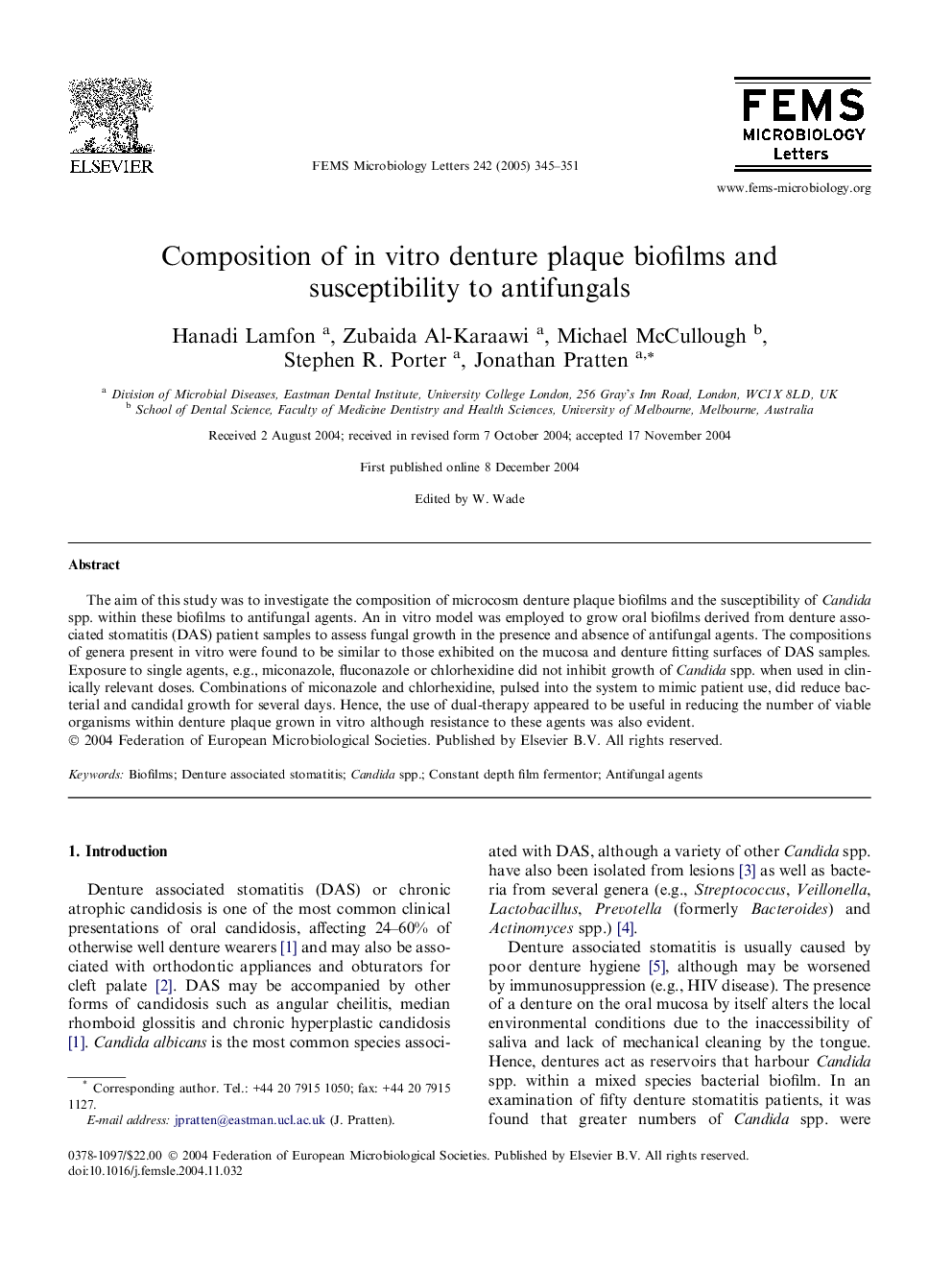| Article ID | Journal | Published Year | Pages | File Type |
|---|---|---|---|---|
| 9122169 | FEMS Microbiology Letters | 2005 | 7 Pages |
Abstract
The aim of this study was to investigate the composition of microcosm denture plaque biofilms and the susceptibility of Candida spp. within these biofilms to antifungal agents. An in vitro model was employed to grow oral biofilms derived from denture associated stomatitis (DAS) patient samples to assess fungal growth in the presence and absence of antifungal agents. The compositions of genera present in vitro were found to be similar to those exhibited on the mucosa and denture fitting surfaces of DAS samples. Exposure to single agents, e.g., miconazole, fluconazole or chlorhexidine did not inhibit growth of Candida spp. when used in clinically relevant doses. Combinations of miconazole and chlorhexidine, pulsed into the system to mimic patient use, did reduce bacterial and candidal growth for several days. Hence, the use of dual-therapy appeared to be useful in reducing the number of viable organisms within denture plaque grown in vitro although resistance to these agents was also evident.
Related Topics
Life Sciences
Biochemistry, Genetics and Molecular Biology
Genetics
Authors
Hanadi Lamfon, Zubaida Al-Karaawi, Michael McCullough, Stephen R. Porter, Jonathan Pratten,
